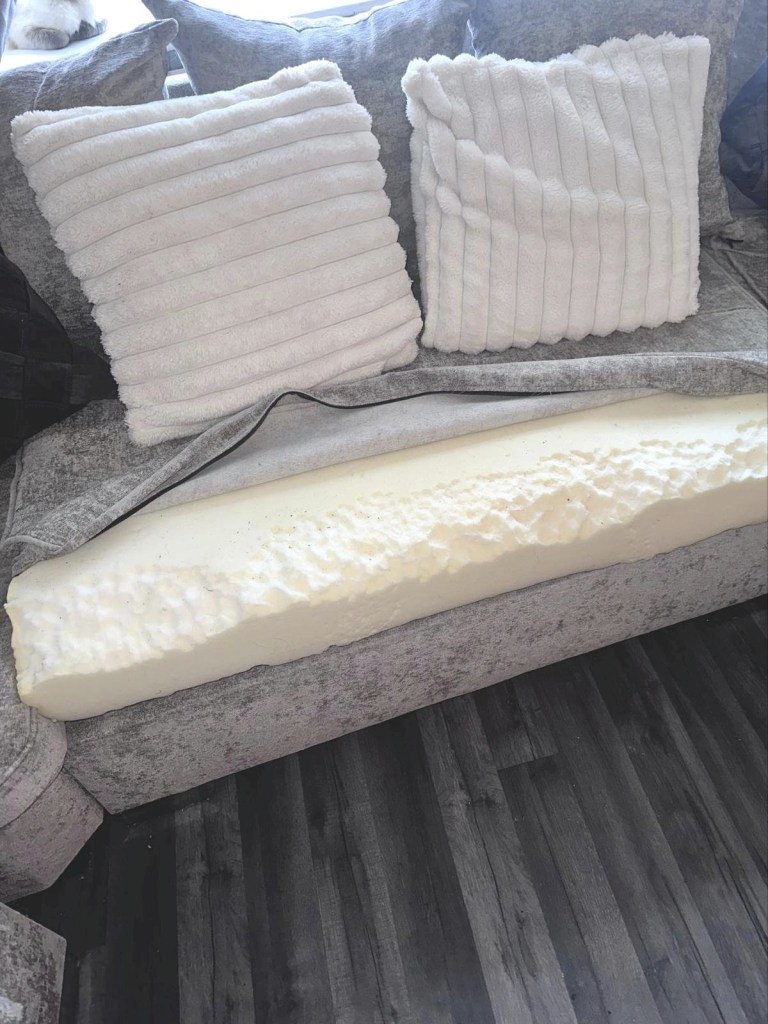A Welsh mom of two says she has to constantly monitor her 3-year-old daughter to stop her from munching on potentially dangerous items around the house.
Wynter was diagnosed with autism and an unusual condition that sparks cravings for inedible objects.
“She is literally eating the whole house,” Stacey A’Hearne, 25, lamented to SWNS. “I bought a brand-new sofa and she’s taken chunks out of it.”
A’Hearne says she has caught Wynter eating plaster off the walls, foam from her sofa, wool from her toys, plants, and candle wax.
Most terrifyingly, she has watched the preschooler smash photo frames and attempt to eat the shards of glass.
A’Hearne says she’ll put Wynter in a high chair with snacks — but she’ll choose to eat the chair.
“She’s really fussy with normal food, but she’ll sit and eat a sponge,” said A’Hearne, from Blackwood, Wales. “She’s smashed about eight photo frames and tried to eat the glass. No matter what, she finds a way to eat things that she shouldn’t.”
A’Hearne noticed Wynter putting things in her mouth as a baby and didn’t think it was anything serious.
She was hitting the usual milestones — like talking and walking — until around 13 months old, when things changed “overnight.”
Wynter became non-verbal and her unusual eating habits began to escalate.
A’Hearne said her daughter was diagnosed with the eating disorder pica, which is said to be found in 18.5% of children.
One study determined that it’s most prevalent at 3 years old and becomes less common as children age.
In January, after further tests, Wynter was also diagnosed with autism.
“Pica can be more common in children who have autism — which Wynter has too,” A’Hearne explained. “I think it’s a sensory thing, and she craves the different textures. She has very severe autism, which means she doesn’t speak much and has some behavioral issues.”
A’Hearne, who is also mom to 1-year-old Everly, said Wynter often awakens at night — and that’s when “her pica really comes out to play.”
“She wakes up at 2 a.m., and I’ve found her eating the cot and the blankets,” A’Hearne shared. “It is exhausting to have eyes on her 24/7, but I’ve got into a good routine, and I understand her needs.”
A’Hearne has found that providing “sensory play time” has helped distract Wynter from her pica cravings.
“Children with autism like sensory things they can touch or sounds,” A’Hearne said. “I’ve got a chewable necklace for her specifically designed for people with pica, that she can chew on with different textures.”
A’Hearne says Wynter also likes to eat, touch, and play with different-shaped pasta.
“The doctors said there’s not much we can do,” A’Hearne sighed. “It’s not good for her, but it’s not extremely dangerous — as long as it’s not glass.”
A’Hearne is hoping Wynter will eventually grow out of the condition. Adults can have pica — which can be found in 10% of people with mental health conditions.
For her part, A’Hearne is raising both daughters with her partner and their dad, Ryan, 30, who doesn’t live with them.
“Luckily, she’s never really hurt herself as I very closely monitor her,” A’Hearne said of Wynter. “But it’s a full-time job watching her.”


















